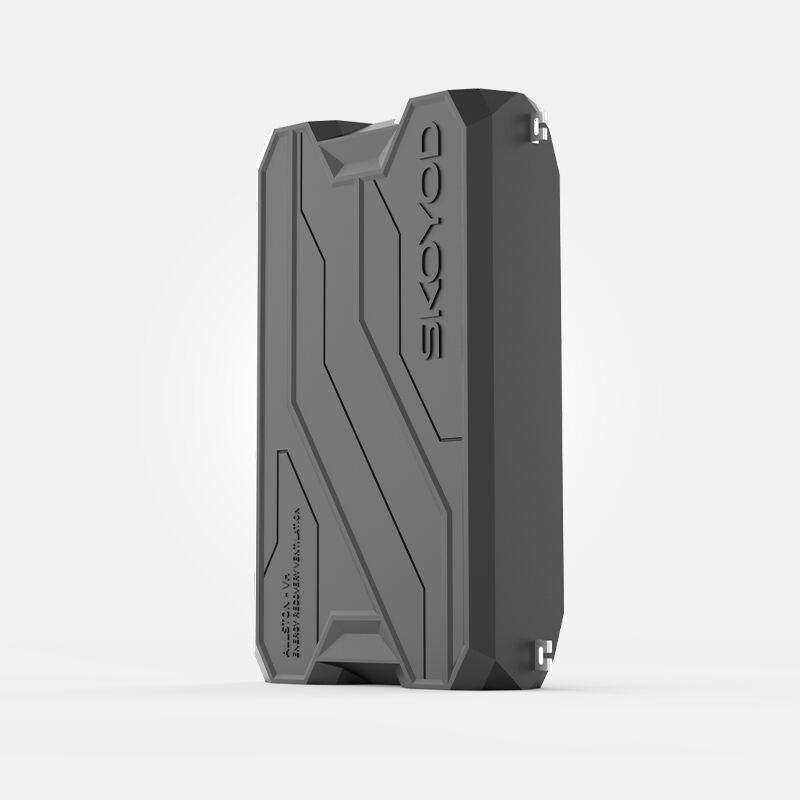How Energy Recovery Ventilators Work to Improve Indoor Air Quality
1. Core Mechanics of ERV Systems
Energy recovery ventilators (ERVs) are designed to enhance indoor air quality by efficiently managing airflow and energy transfer. ERV systems operate with dual airflow paths: one for exhaust air and one for bringing in fresh, outdoor air. This dual pathway ensures that stale indoor air is replaced with fresh air while maintaining the comfort of the indoor environment. A core component of ERV systems is the heat exchanger, which allows for energy transfer between the two air streams without mixing them. This process helps regulate indoor temperature, reducing the need for additional heating or cooling. Furthermore, built-in fans play a crucial role in facilitating air movement, ensuring effective ventilation throughout the space. As a result, ERVs help maintain optimal indoor air quality and climate efficiency effortlessly.
2. Heat and Moisture Exchange Process
Understanding the heat and moisture exchange process is vital to grasp how ERVs optimize indoor air conditions. During winter, ERVs capture warm indoor air's thermal energy and transfer it to incoming cold air, maximizing heat retention and reducing heating costs. Conversely, in hot summer months, these systems pre-cool the incoming warm air, easing the burden on air conditioning units. ERVs also excel in moisture transfer, particularly in humid conditions, by balancing indoor humidity levels for enhanced comfort. Studies indicate that ERVs can perform with efficiency rates exceeding 70%, significantly contributing to energy conservation and cost reductions in HVAC usage. This dual-energy recovery capability underscores the ERV's pivotal role in maintaining a comfortable indoor climate while curbing energy expenses.
3. Integration with Existing HVAC Systems
Integrating energy recovery ventilators with existing HVAC systems can bolster efficiency and performance significantly. ERVs can seamlessly connect to various HVAC setups, improving fresh air flow without compromising energy use. However, it's crucial to anticipate ductwork modifications to accommodate these systems fully. Despite such adjustments, testimonials from HVAC professionals highlight ERVs' effectiveness in elevating system efficiency and indoor air quality. Their insights affirm the benefits of ERV installations, showcasing improvements in air exchange rates and energy management. By synergizing ERVs with traditional HVAC systems, property owners can enjoy enhanced ventilation, reduced energy consumption, and the improved well-being of occupants, exemplifying a proactive approach to modern indoor climate management.
Key Benefits of ERVs for Indoor Air Quality
1. Reduction of Pollutants and Allergens
Energy Recovery Ventilators (ERVs) are crucial in combating indoor air pollutants by consistently introducing fresh outdoor air into a building. Unlike traditional ventilation methods that might be inefficient, ERVs effectively dilute pollutants such as VOCs (Volatile Organic Compounds), carbon dioxide, and indoor allergens. In fact, studies indicate that ERV systems can reduce indoor pollutant concentrations by up to 30%, significantly enhancing air quality. Experts emphasize the importance of such ventilation, particularly during allergy seasons, as it helps lower allergen levels and supports respiratory health.
2. Balanced Humidity Control
Maintaining balanced humidity levels is another significant advantage offered by ERVs. These systems prevent excessive dryness or dampness by regulating indoor moisture levels, which is crucial for avoiding mold growth and structural damage in buildings. Research reveals a strong correlation between unbalanced humidity and various health issues, including respiratory problems and skin irritations. With features tailored for year-round performance, ERVs ensure optimal humidity levels regardless of seasonal shifts, thereby contributing to a healthier indoor environment.
3. Continuous Fresh Air Circulation
The necessity for continuous fresh air circulation is paramount for occupant well-being and comfort. Energy Recovery Ventilators facilitate this by providing a consistent flow of fresh outdoor air without the energy losses associated with traditional ventilation systems. Studies have shown that improved air circulation results in psychological and health-related benefits, such as enhanced cognitive performance and reduced fatigue. ERVs operate efficiently to supply a steady stream of outdoor air, ensuring that indoor air remains fresh and occupants stay comfortable.
Maintaining Optimal ERV Performance
1. Filter Replacement Schedules
Regular filter maintenance is crucial in sustaining the optimal performance of energy recovery ventilators (ERVs) and enhancing indoor air quality. It is advisable to replace filters every three months; however, the frequency might vary depending on environmental conditions and usage. Failure to maintain filters can significantly deteriorate ERV efficiency, leading to inadequate air purification and increased allergen levels. According to data, a clogged filter can reduce airflow by up to 70%, undermining the system's effectiveness and potentially causing damage to the unit itself. Therefore, adhering to recommended filter schedules promotes longevity and efficiency of the ERV system.
2. Seasonal Maintenance Checklist
To ensure the longevity and efficiency of your ERV system, a structured maintenance checklist for each season is essential. Key tasks include inspecting and cleaning the heat exchanger, checking electrical connections, and verifying that ducts are not obstructed. These seasonal check-ups can prevent system failures and optimize performance, prolonging the lifespan of your ERV. Industry standards, such as those set by the American Society of Heating, Refrigerating, and Air-Conditioning Engineers (ASHRAE), emphasize the importance of regular maintenance in maintaining optimal indoor air quality. Following these guidelines ensures that your ERV operates efficiently throughout the year.
3. Troubleshooting Common Issues
Despite their robust construction, ERVs may face certain operational issues like reduced airflow, noisy operation, or imbalanced humidity control. Users can troubleshoot these common problems by regularly checking and cleaning filters, ensuring that the unit's settings match the season, and inspecting ductwork for blockages. Performance monitoring tools can also help anticipate maintenance needs and identify potential issues before they escalate. For instance, low airflow might indicate a filter replacement is needed, while unusual noises could signal loose components. Case studies have shown that proactive monitoring and timely maintenance significantly reduce the frequency of these issues, ensuring continuous and efficient operation of the ERV system.


 EN
EN












